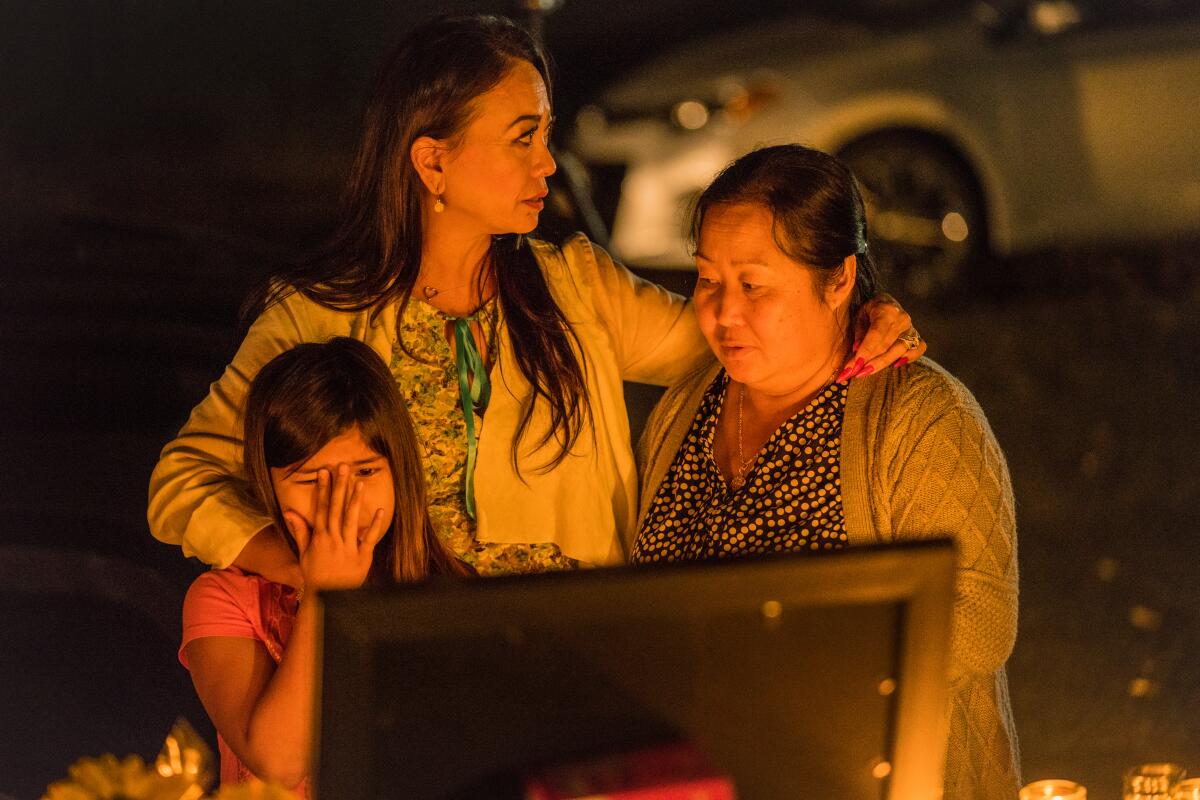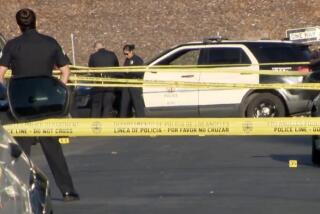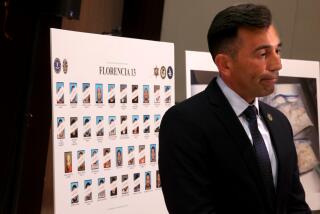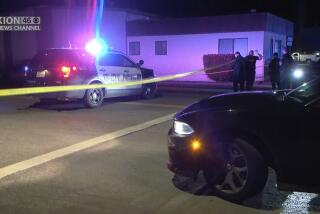Six suspects arrested in mass shooting that left four dead in Fresno

Six weeks after four men were killed in a mass shooting at a home in southeast Fresno, the Fresno Police Department announced the arrest of six suspects on Tuesday. One suspect remained at large.
Police said that on Nov. 17, two men sneaked into a backyard party in a majority-Hmong neighborhood and opened fire into a crowd of nearly 40 friends and family who had gathered to watch a football game. Sixteen people were shot, and four died: Kou Xiong, 38, Xy Lee, 23, Phia Vang, 31, and Kalaxang Thao, 40.
At a news conference Tuesday, Fresno Police Chief Andy Hall announced that the six suspects connected to the shooting were members of the Mongolian Boys Society gang. Hall said that the shooting was retaliation against the Asian Crips gang following a shooting that took place 16 hours before the backyard attack that left one of the Mongolian Boys Society members dead.
In the immediate aftermath of the shooting, Fresno police said that they had created an Asian gang task force and feared further violence ahead of the Hmong New Year’s celebrations that will draw hundreds of Hmong to the area for what is considered to be the largest celebration of its kind in the nation.
Police originally had said there were no indications that any of the victims had gang ties. They did believe, however, that the home was targeted, but didn’t offer further details.
Hall said that one person at the party was a former affiliate of the Asian Crips, but was not an active member of the gang. The suspects targeted the house because they believed the event was an Asian Crips gang party, he said.
On Dec. 17, one of the suspects who was a person of interest in the backyard shooting was arrested on suspicion of mail theft. Police said they located a Glock pistol, believed to be the weapon used in the shooting, and two 30-round magazines.
On Thursday, Fresno police served 19 search warrants in the cities of Fresno and Visalia and contacted 40 people at the locations. Thirteen firearms were seized during the searches, one of which was determined to be the second weapon used in the backyard shooting. Police credited a tip to revelations during the investigation.
The arrests came one day after officials labeled the tragedy a gang-related shooting.
The suspects from Fresno – Billy Xiong, 25, Johnny Xiong, 25, Anthony Montes, 27, Porge Kue, 26, Pao Vang, 30, and Jhovanny Delgao, 19 – each could face charges that include four counts of homicide, 12 counts of attempted murder and conspiracy to commit murder. The suspects are being held on bail of more than $11 million.
“The shooting affected not only the city, but also really impacted our Hmong American community,” Hall said.
Police have been on high alert this week, monitoring social media for potential threats since the weeklong New Year’s event at the Fresno Fairgrounds started last weekend.
“The Hmong New Year celebration provides an opportunity to showcase the rich tradition of the Hmong culture and its people. This year it also shows the strength and resolve of a community that has recently dealt with tragedy,” Fresno Mayor Lee Brand tweeted.
The killings brought sudden attention to one of the nation’s largest Hmong communities, which has been left reeling as police searched for the suspects and motive. The youngest victim to die in the shooting, Lee, was a well-known Hmong singer. One of his most popular music videos has garnered over 4.4 million views – nearly 1 million of which came after his death – with hundreds of comments expressing sadness over his loss.
Many Hmong immigrants in California, including Kou’s family, are survivors of the so-called Secret War that followed the 1975 collapse of the kingdom of Laos. The Hmong people fought alongside U.S. troops against communism during the Vietnam War, marking them as targets after the Laotian communist government took over.
Most refugees fled to camps in Thailand before they were settled in the U.S. California now has the largest Hmong population in the country, with nearly 100,000 people.
Times staff writers Andrea Castillo, Anh Do and Alejandra Reyes-Velarde contributed to this report.
More to Read
Sign up for Essential California
The most important California stories and recommendations in your inbox every morning.
You may occasionally receive promotional content from the Los Angeles Times.











